To anyone who has spent a languid summer afternoon tumbling in the waves on South Beach or watched the earth’s closest star dip into the horizon at Menemsha, the ocean can seem eternal and unchanging. But scientists are increasingly discovering that human activity is transforming what was once thought to be an invulnerable resource. The ocean is getting warmer, more acidic, louder and filled with the detritus of civilization. What effect these changes will have on the ocean’s inhabitants in the decades to come is unclear.
Warming is perhaps the most well-known man-made effect. While the past winter and summer have been a wake-up call to some on land, underwater in southern New England the changes have been well underway for more than a decade. Near the Vineyard that has meant a staple of the coastal New England diet long associated with its historic fishing community has shifted north.
“The southern New England lobster fishery has undergone essentially a collapse in the last decade,” said state senior marine fisheries biologist Robert Glenn. Mr. Glenn is not shy about drawing a line between the discouraging trend and larger forces.
“It’s primarily climate change,” he said. “Southern New England represents the southern extent of the range of lobsters. Lobsters are extremely sensitive to temperature when they get above 68 degrees and in the last decade we’ve had an unprecedented number of days in which the ocean temperature has exceeded that for extremely long periods of time, even on the bottom.”
As a result, fishermen have had to target other species in Nantucket Sound, such as channeled whelk, which has become the most valuable, if unlikely, fishery for Vineyard fishermen who sell most of the sea snail, commonly called conch, to Asia.
And the effects of warming waters have been felt elsewhere nearby. On Cape Cod, critically endangered right whales, which normally appear in late March and early April, began arriving off Provincetown before Christmas this year. Sea turtle stranding mortality was up as well in the region.
“Normally, of the turtles that are found, about half are alive,” New England Aquarium spokesman Tony LaCasse said in an interview earlier this year. “This year only about one-third were found alive. The animals that came in were much more sick than the animals you would normally see and the reason is that they were emaciated, which makes their immune system more vulnerable to pathogens.”
Mr. LaCasse surmised that warmer water tempted the turtles to linger in the region longer than usual before heading south, a behavior that likely sapped them of their energy reserves.
For the Island’s prized, and growing, shellfish industry, warmer waters have brought unwelcome visitors from the south.
“Our issue here has been dermo,” Martha’s Vineyard Shellfish Group director Rick Karney said at the shellfish hatchery on Lagoon Pond in Vineyard Haven, where this week his staff was prodding bashful bay scallops to spawn. Mr. Karney was referring to the oyster disease which is present in the Island’s Great Ponds. Dermo is harmless to humans, but has in years past wiped out the Island’s wild oyster stocks.
“Indications are it’s always been a problem down south and it’s moved north in the past 10 to 20 years. The long cold winters will knock it out, so we’re a little concerned because we had no winter at all last year,” Mr. Karney said.
But while global warming gets all the headlines, there is a much less talked-about problem with carbon dioxide that makes many shellfish growers nervous: ocean acidification.
Acidifying Oceans
“Human emissions are roughly 10 billion metric tons of carbon a year and the ocean takes up roughly a quarter of that,” said Woods Hole Oceanographic Institution senior scientist Scott Doney, who was President Obama’s pick for chief scientist of the National Oceanic Atmospheric Administration before his nomination was blocked for over a year in Congress.
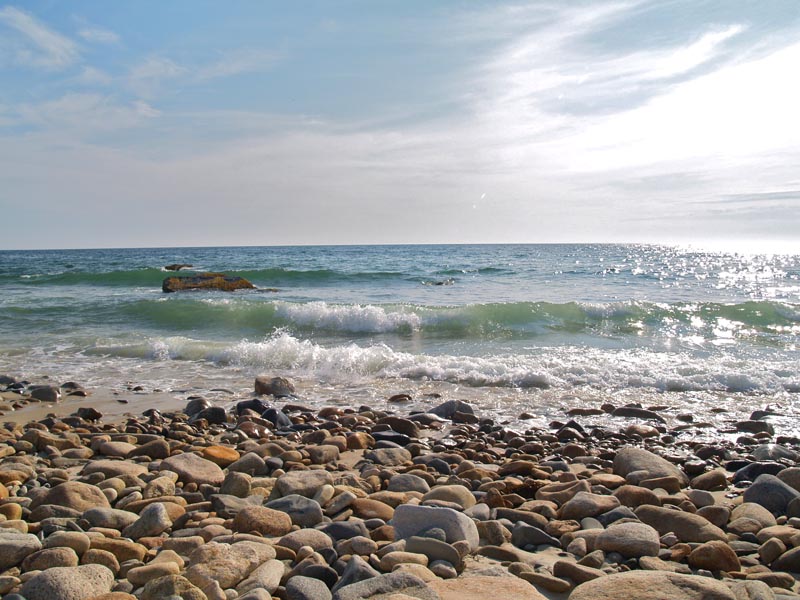
Put simply, atmospheric carbon dioxide reacts with seawater to create carbonic acid. As a result, after soaking up centuries’ worth of carbon dioxide, the ocean is now 30 per cent more acidic than it was in pre-industrial times, and it is headed toward levels not seen in tens of millions of years. For calcifying animals like shellfish, whose juveniles simply dissolve outside of a very narrow pH range, the results could be devastating. According to one study carried out by researchers at Stony Brook University, the impacts are already here. That study looked at quahaugs reared in different tanks of seawater with varying levels of dissolved CO2, representing the pre-industrial ocean, the modern ocean and the future ocean. The study found that not only were the shells reared in water with acidity levels projected for the end of the century smaller, more defective and thinner, but that modern-day quahaug shells paled compared to those raised in pre-industrial seawater, which were far hardier and healthier. It could mean that modern oysters are much more vulnerable to disease than in decades past.
“Acidification is really a chronic illness that builds up over a long period of time and is background stress on animals,” said Mr. Doney. “We’re expecting to see very rapid change and very large change in the next several decades. One of the things we don’t know yet is if there is a tipping point.”
In the Pacific, oyster growers have gotten a sneak preview of that tipping point in recent years, as upwelling events that have brought acidic water to the ocean surface have wiped out whole oyster farms and businesses. Mr. Karney does not expect such catastrophic acidification to happen for decades, but he said development around the Island’s estuaries can simulate those acidic environments. When runoff from fertilizer or discharge from septic tanks hits Island ponds, it spurs algae growth which dies and is consumed by bacteria. The bacteria can rob the ponds of oxygen while they metabolize, but they also emit CO2, making the waters more acidic.
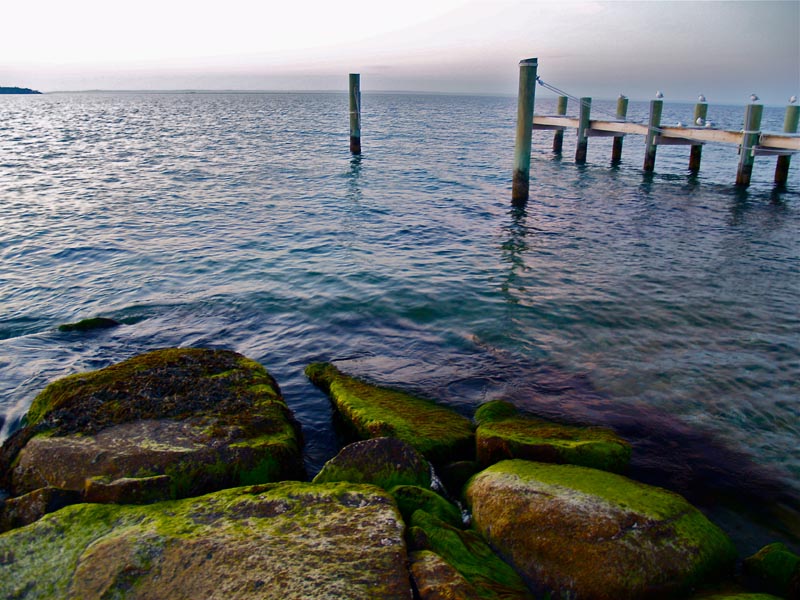
But the Vineyard is not without a defense.
Last summer Vineyard Vision fellow Jessie Kanozak began a mission to return Island oyster shells to their homes, driving from restaurant to restaurant and collecting hundreds of buckets of used oyster shells as part of the Martha’s Vineyard Shellfish Recovery Partnership, which she founded. This summer she has upgraded her program with a pick-up truck and hopes to install a mechanical lift. While Vineyarders have been taking millions of wild oysters out of the saltwater ponds in recent years, which is good news for consumers, very few shells were going back in the water, which is bad news for juvenile oysters. Most spent oyster shells from Island restaurants had wound up in the trash. Now more than ever, the calcium carbonate shells are vital to the life of the ponds. Not only do they provide a hard surface for juvenile oysters to set (known as culch), but they can also buffer against increasing acidity.
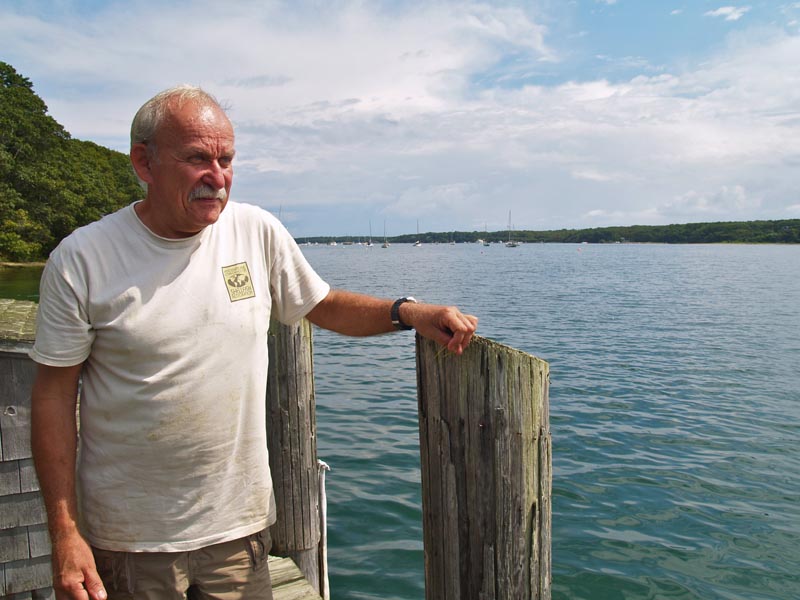
Or as Mr. Karney puts it:
“Shell is essentially the Rolaids of the water.”
In a forum earlier this year, Ms. Kanozak explained her young program.
“The community really likes the idea of harvest-to-table and back,” she said. “This program is simple and it closes the loop.”
Curiously, not all shell-bearing animals react the same to more acidic water, as former Woods Hole researcher and North Carolina professor Justin Reis discovered. Mr. Reis subjected 18 different animals to high CO2 water, from urchins to corals. While oysters, clams and bay scallops struggled, crustaceans such as lobsters and crabs, which are able to adjust their internal pH, were able to use the dissolved carbon to make more shell and grew faster.
“I’ve actually been contacted by some aquaculture people who have begun to bubble CO2 into their systems to enhance their growth rates of blue crabs, which was kind of an ironic impact of the study,” he said. “But this study did hit home that the bivalve shellfish industry will be hit the most hard.”
Oceans Full of Plastic
For beachcombers, perhaps the most obvious evidence of human impact on the ocean is the occasional balloon or soda bottle that washes ashore. The iconic image of pollution in the ocean is of the seabird or fish entangled in a plastic six-pack holder, but Kara Lavendar Law of the Sea Education Association in Woods Hole, which has been sampling the North Atlantic for 40 years, said the plastic her teams of undergraduates find in the ocean is usually much smaller.
“It’s generally speaking smaller than a pencil eraser,” she said. Just like the Great Pacific Garbage Patch, which has received considerable media attention in the past few years, Ms. Lavendar’s organization has brought to light an area in the North Atlantic that stretches for thousands of miles where currents converge, carrying and concentrating plastic from afar.
“If you go sailing up in the Gulf of Maine and in Vineyard Sound you’ll still find plastic debris but not nearly as high a concentration as if you go a bit further south. Bermuda is right in the center of it,” she said.
On one of Ms. Lavendar’s trips, her students saw up close the effects this debris could have on the ecosystem
“We typically tow a line to try to catch something for dinner and this time we pulled up a mahi mahi,” she said. “We dissected its stomach for scientific purposes and we found some sort of two-by-three-inch plastic grating material. I have no idea what it was from. Also in the fish’s gut was a similarly-sized fish with similar colors. If you’re out there in the ocean and that’s how you make your living and you see something that vaguely resembles food you’ll eat it.”
Strange communities of bacteria have come to call these plastic islands home; scientists are not sure whether the organisms are breaking it down or merely burrowing in it for protection. Also unknown is where it all comes from: Is it from consumers on the continent or ships at sea? Is it grocery bags, milk jugs, fleece fibers, fishing gear?
“Yes,” Ms. Lavendar said laughing.

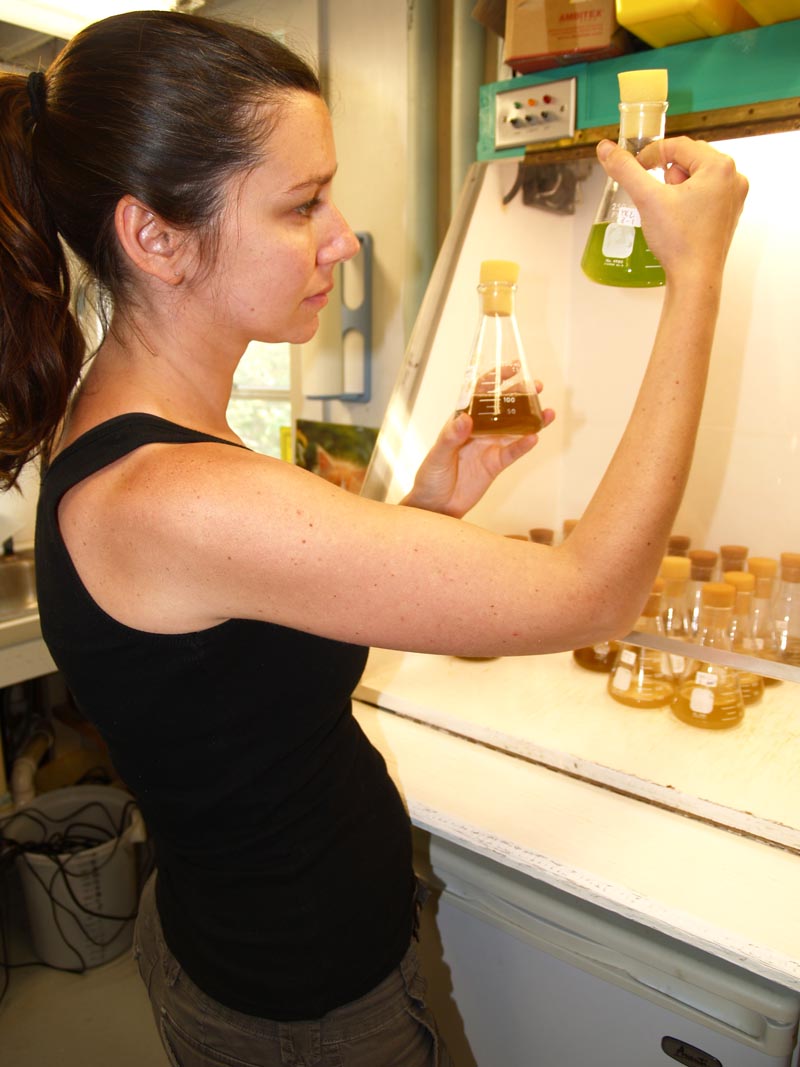
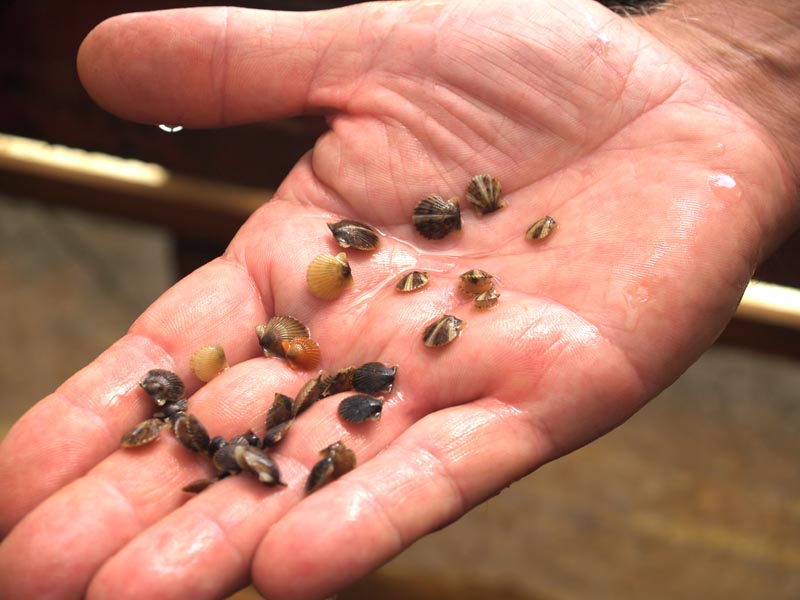
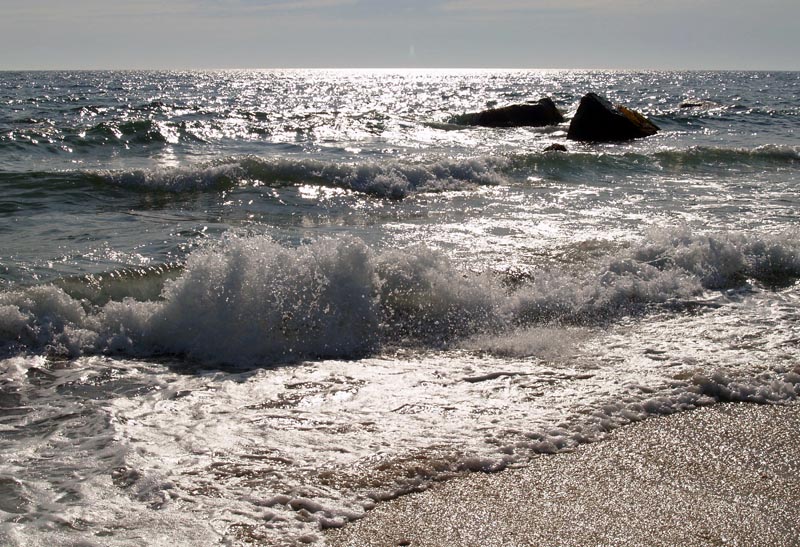
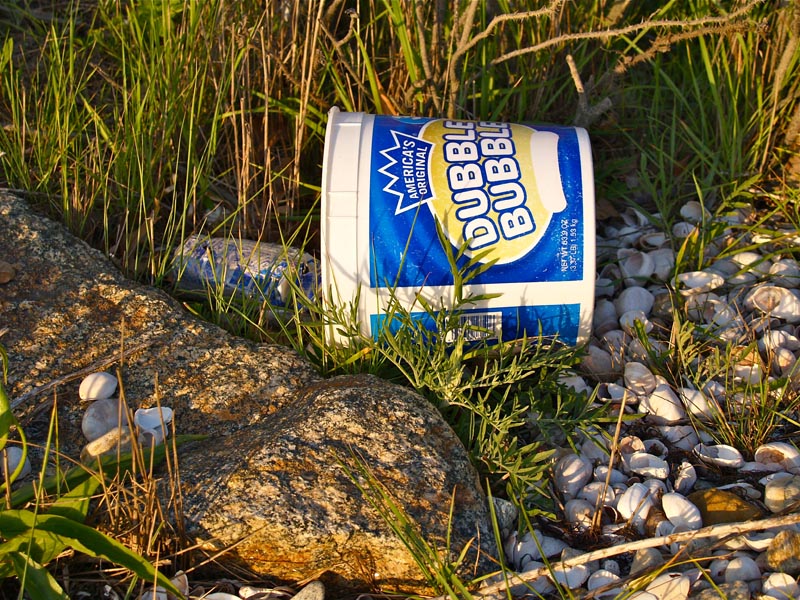





Comments (2)
Comments
Comment policy »